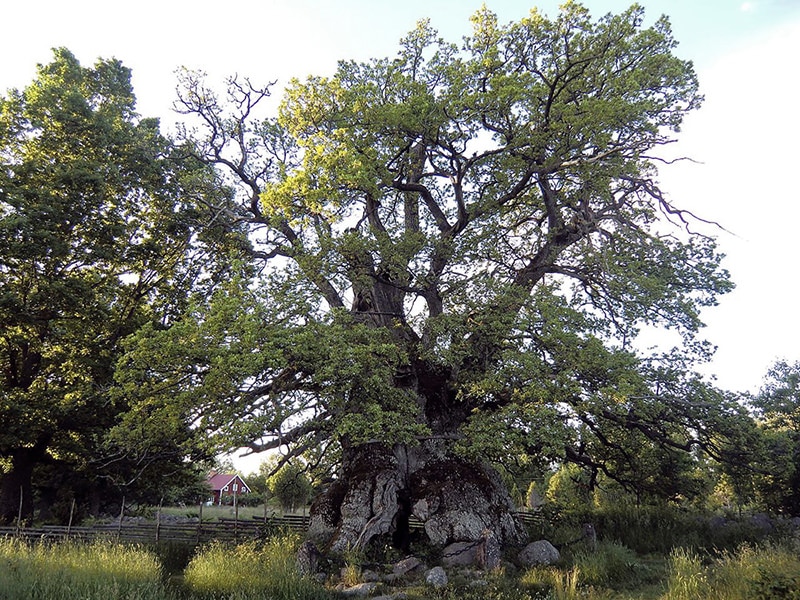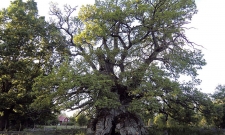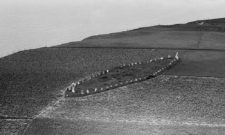Locations
Kvilleken - a 1000-year-old giant

Oct
The Kvilleken is a 1000-year-old giant, one of Europe's largest trees and, according to the municipality of Eksjö, the oldest in the Nordic region. It is also dying.
Kvilleken (also Rumskullaeken) is an old oak tree at Norra Kvill in Rumskulla parish, Sevede county, Småland. The oak, which is over 13 metres in circumference, has been estimated to be over 1,000 years old, making it by far one of the oldest trees in Scandinavia. In 2008, the Kvill nature reserve was created around the oak.
Sometime around the year 1,000, at the transition from the Scandinavian Iron Age Viking Age to Middle AgesKvilleken took root and began to emerge from the stony soil of northern Småland, or what was then the small folk country Sevede. Looking at the whole of Sweden within its present borders appreciated the population at that time to 400,000 inhabitants - people from whom we now living Swedes are largely descended.
Around this time, Olof Skötkonung was king of the Swedes and the Goths. He was the first king to rule over both Mälardalen and Västergötland, and he was also the first Swede king to be baptised, contributing greatly to the Christianisation of Sweden. Far across the sea to the west, at the same time Leif Eriksson as the first European in America, or Vinland as the northerners called it. When the oak was a small sapling, it went out to the east Ingvarståget from Svealand, a Viking raid whose tragic end many rune stones tell of. All around the Nordic countries stood the temples of paganism where people still sacrificed to the old gods.

Countless people have come and gone since Kvilleken first saw the light of day. Roughly 45 generations have seen the oak tree reach up to the sky. But nothing lasts forever. Kvilleken is now dying and was thought in 2018 to have only years left in its life, as Vimmerby newspaper reported on. The health of the tree has deteriorated sharply each year from 2012, although there are some hopes that the tree can recover.
In summer 2019 the oak tree got new leaves on one of its branches. This raised hopes that the tree will survive at least another year.
Kvilleken was first described in 1772 by the bailiff Magnus Gabriel Craelius in the book Attempt to describe a landscape. Already more than 246 years ago it was possible to stand inside the tree, when it was used as a tool shed. Craelius wrote:
Since the infamous death of the dike, and within 150 years after it, the largest oaks growing in this locality seem to have first come up out of the earth, and there are still some older ones, among which one that is still fresh and stands on the Lieutnant's estate of North Qvill is remarkable, as it is 22 cubits around the trunk; and I myself have stood within her eighth; the farmers of the place use her as a tool shed, to be used therein for the weighing of oars, harps, and hedges.
Getting there
Kvilleken is located in the Kvill nature reserve a few kilometres south of the Norra Kvill National Park.
Coordinates: Latitude 57.7346423 | Longitude 15.628567699999962
Discover more interesting places to visit at History map.
Subscribe to YouTube:
If you appreciate Allmogens independent work to portray our fine Swedish history and Nordic culture, you are welcome to buy something nice in the shop or support us with a voluntary donation. Thank you in advance!
Support Allmogens via Swish: 123 258 97 29
Support Allmogens by becoming a member
Support Allmogens in your will
Historical maps of Småland
Our wall maps are carefully restored, centuries-old maps that are reprinted in Ångermanland on matte, age-resistant, museum-quality premium paper. 1% of the proceeds go directly back to cultural heritage!








